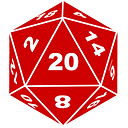Core Mechanics Model — A simple framework that showed the cause behind a major problem in my game
As I detailed in my last post, character powers in Battle Bash were extremely unbalanced when I started designing the game. When I finally revamped the weaker powers last fall, the Barbarian’s power worked great.
But ever since I invented it, I’ve had a growing feeling that the wizard’s new power didn’t really fit. This power lets the wizard take a heart from another piece instead of losing one itself if it rolls a certain number. As I play tested with this powers, I started to see that players would forget to use it, all the while claiming that it was an awesome, really powerful ability.
At first, I thought that players were forgetting this power because it was too complicated. For a while, I wasn’t sure what was wrong with the wizard’s ability, and decided to leave it alone while I worked on the power up system. But last week, I found a couple articles that helped me figure out why the ability wasn’t working and how to change it.
These articles taught me a model for analyzing games that is centered around something called core mechanics. This article by video game designer Charmie Kim explains the how this model works and this blog post by Ruby Cow Games shows how it can be implemented in a table top games.
In the core mechanics model, every game has four elements. First there are core mechanics, one or two actions that everything else is centered around. Then, there are secondary mechanics that feed into and support those mechanics. Third is a progression, determining how players advance through the game. Fourth is the narrative: the theme and story of the game.
I made this diagram which analyzes Battle Bash according to the core mechanics model. The primary core mechanic is rolling a dice in battles, which lets you take hearts from your opponent if your lucky, and makes you lose a heart if your not. Movement is a minor secondary mechanic based on battles that lets you chose who to fight. The second core mechanic is drawing cards, which let you gain powers. These powers interact with the first core mechanic through the progression by giving you a higher chance of gaining hearts. This all relates to the narrative of fighting other players and trying to eliminate them.
This leaves character powers, a secondary mechanic that is based around rolling dice in battles by increasing the chance that you win the battle. But this wasn’t always the case. At the beginning, the wizard and the scout had powers that were based around the minor secondary mechanic of movement. This model shows that those powers had a more indirect impact on the primary mechanic, and therefore less impact on the game as a whole, which was why they needed to be revamped.
My main take away from this diagram is that the wizard’s power doesn’t have as strong an association with battles as the other character abilities. It decreases your chance of losing hearts through battle, which is sort of an interaction with the core mechanic. However, unlike the other powers, the wizard’s doesn’t affect the opponent you chose to battle. Instead, it takes a heart from someone who did not chose to fight you and who made no die roll to determine whether they lost that heart. I believe that this lack of association between who rolls the dice and who loses a heart is why the wizard’s ability has been forgotten so often.
The core mechanics model has been very helpful in determining what was wrong with the wizard’s ability. In the future, I will use it to see what works with my game when designing new mechanics, and figure out the cause of the problem when I encounter future problems in my game.
Thanks to Charmie Kim and Ruby Cow games for writing those awesome articles on the Core Mechanics Model and thanks to you for reading!!!
